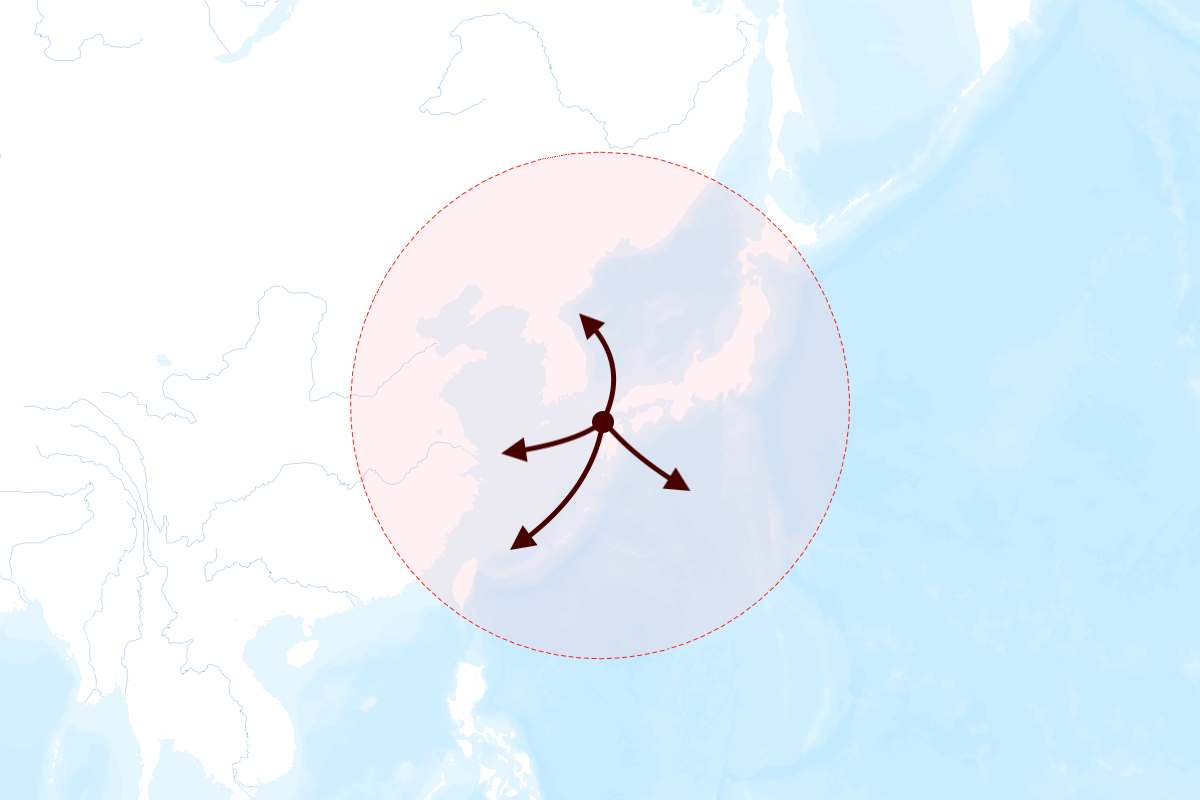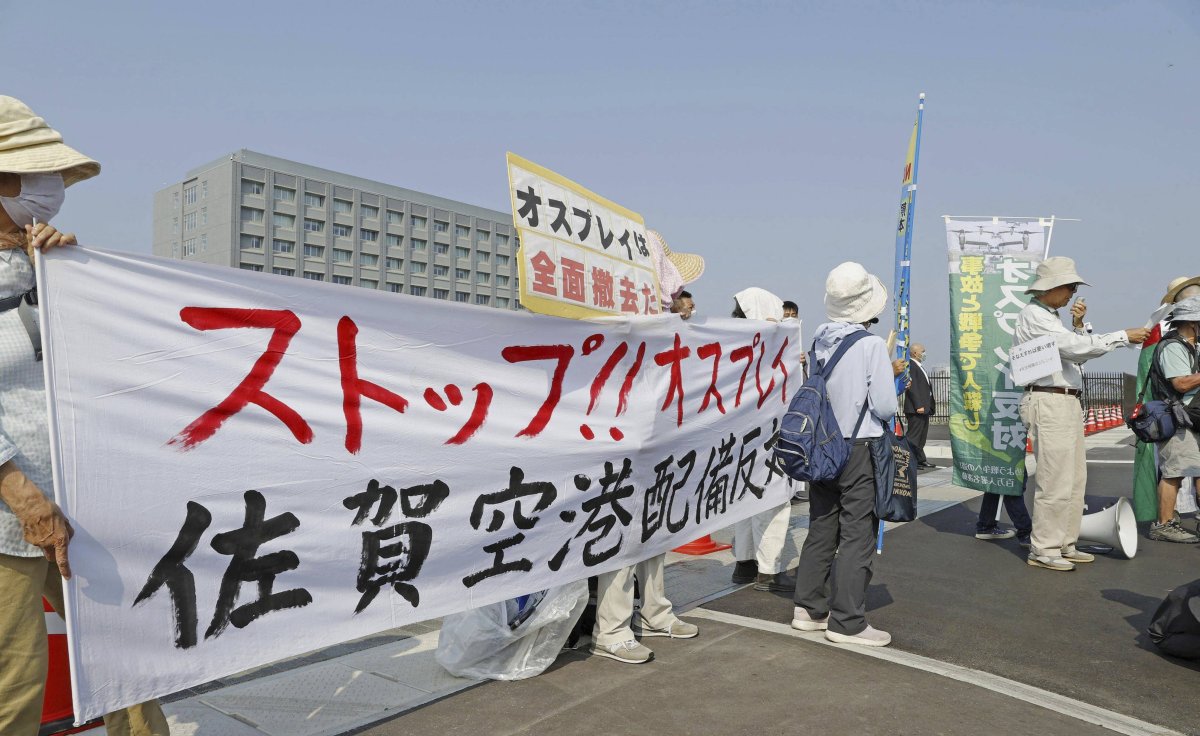
Japan—a key United States ally in the Indo-Pacific—has completed the deployment of its U.S.-made Osprey aircraft fleet, bolstering the defense of its outlying islands near China.
Newsweek has reached out to the Chinese Foreign Ministry for comment via email.
Why It Matters
Under the U.S. island chain strategy, Japan forms part of the First Island Chain—along with two of America’s allies and partners, Taiwan and the Philippines—in the Western Pacific, aiming to restrict China‘s military activities within its immediate waters in the event of war.
Japan views China as the greatest strategic challenge to its defense. Beijing has vowed to take Taiwan—a self-ruled island near Japan’s southwestern islands—by force if necessary and claims the Senkaku Islands in the East China Sea, which are administered by Japan.
The acquisition of the Osprey, a tilt-rotor aircraft capable of flying like a fixed-wing plane while taking off and landing like a helicopter, is part of Japan’s effort to boost its defensive capabilities. In particular, its southwestern islands have a limited number of airfields.
Kyodo via AP Images
What To Know
Japan’s Defense Ministry announced on Tuesday that its V-22 Osprey fleet—consisting of 17 aircraft—has completed relocation from a temporary base at Camp Kisarazu in Chiba Prefecture, near the capital Tokyo, to its permanent base at Camp Saga in Saga Prefecture.
According to a Newsweek map, Camp Kisarazu is located on the eastern coast of Japan’s largest main island, Honshu. Camp Saga, which opened on July 9, is located on Kyushu, the southernmost main island, facing both the East China Sea and the southwestern islands.
The Osprey has a stated flight range of 860 nautical miles, or 980 miles, making it capable of reaching all of Japan’s southwestern islands, as well as China’s northern, eastern and southeastern coastlines, Taiwan, and the Korean Peninsula from Camp Saga.
Tokyo described the Osprey fleet’s deployment at Camp Saga as of “great significance” in strengthening island defense. The aircraft will be integrated with the Amphibious Rapid Deployment Brigade, which was created for conducting land assaults from the sea.
The Osprey is manufactured through a partnership between Bell and Boeing. The Japan Ground Self-Defense Force is currently the only foreign operator of the aircraft, which has also been used by the U.S. Air Force, U.S. Marine Corps and U.S. Navy since 2007.
However, a series of crashes involving the Osprey has raised concerns in Japan over its safety.

Kyodo via AP Images
What People Are Saying
Japan’s Defense Ministry said in a press release on Tuesday: “The security environment surrounding Japan has become increasingly severe in recent years, and strengthening island defense capabilities, including in the southwest region, is an urgent issue for Japan’s defense.”
Boeing says on its website about the V-22 Osprey: “With its rotors in vertical position, it can take off, land and hover like a helicopter. Once airborne, it can convert to a turboprop airplane capable of high-speed, high-altitude flight. This combination results in global reach capabilities that allow the V-22 to fill an operational niche unlike any other aircraft.”
What Happens Next
It remains to be seen how Japan will further strengthen its defense posture in the southwestern islands amid China’s growing military presence in the region.
